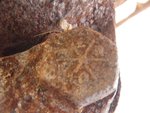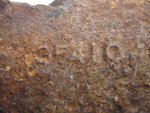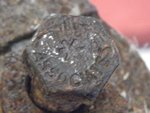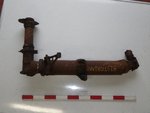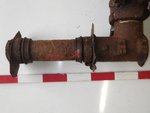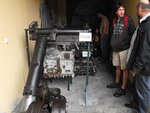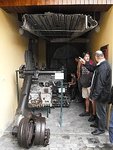Hi all
I was wondering if anyone knows what aircraft this land gear might be from. The bolts bear the word 'associates' and a star. It also has a possible (part?) number of 35410, but other than that no markings. It was recovered from the sea, we think it's WW2, but it could concievably be later - discovered in the Thames.
Any suggestions gratefully received.
Thanks
I was wondering if anyone knows what aircraft this land gear might be from. The bolts bear the word 'associates' and a star. It also has a possible (part?) number of 35410, but other than that no markings. It was recovered from the sea, we think it's WW2, but it could concievably be later - discovered in the Thames.
Any suggestions gratefully received.
Thanks

